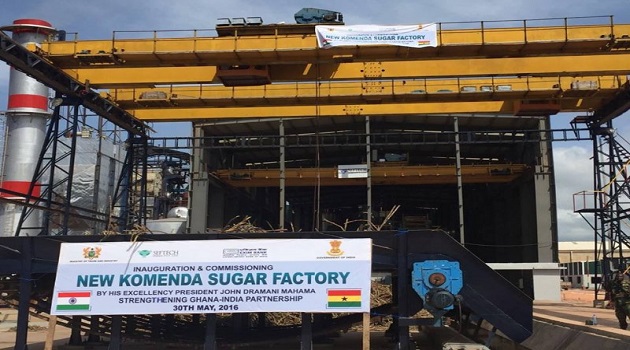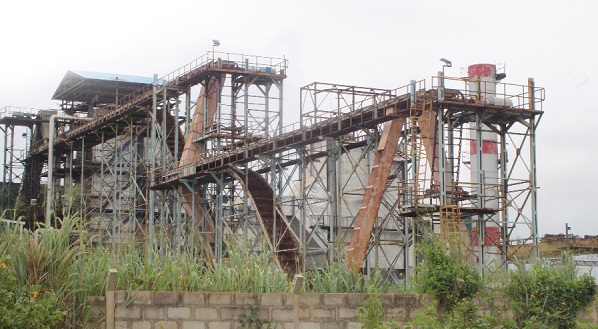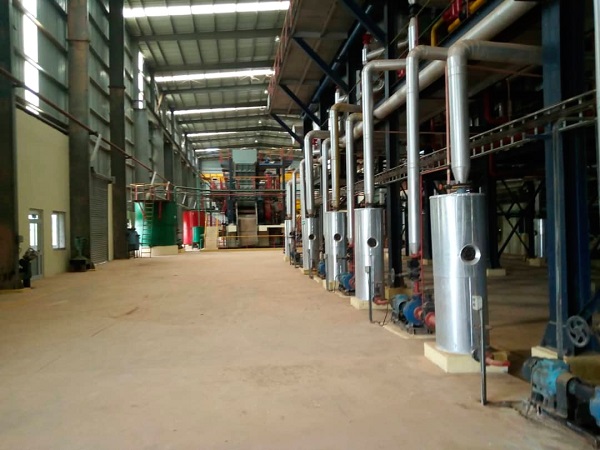
Reviving Komenda Sugar Factory: where is the strategic investor?
When the $60-million factory was inaugura-ted on May 31, 2016, it was all smiles for residents of the Komenda-Edina-Eguafo-Abirem (KEEA) Municipality in the Central Region.
To them, their long-awaited dream of getting a hen that lays the golden egg had materialised. It was their pride, their hope and the venture that earned them a livelihood.
Advertisement
Many of the residents were engaged in one aspect of the production value chain or another. There was a glimpse of hope that poverty would soon make way for sustainable livelihoods in the area.
The factory which was reconstructed through an Indian Exim Bank loan had the capacity to crush 1,250 tonnes of sugar per day.
It was estimated that the factory could employ 7,300 people along the value chain and also add value to the lives of the people of the municipality.
Sad story
However, the high hopes and expectations of the people have been crashed as what was supposed to save them has been left to rot. A recent visit to the factory showed that it had been reduced to a white elephant after almost three years of being left dormant.
The atmosphere on the premises of the factory could best be likened to a ghost city as there was no human activity, except for the security guards who go there for a daily routine of safeguarding the properties and machines.
The harsh weather condition, combined with the salty breeze from the Atlantic Ocean that lies about three kilometres from the factory has caused rapid corrosion of the metallic parts of the machinery at the facility.
Weeds have virtually taken over the factory, making it a haven for rodents and reptiles. Large hectares of sugar cane plantations that have been produced by out-growers to feed the factory are wasting away while farmers count their losses.

Residents cry
The sad state of the factory is a major concern to the residents of the area. When I got to the Komenda town, I saw anxiety, dejection, despair and disappointment written on their faces.
They shared their frustrations with me, noting that further delays in putting the factory back to its feet would deepen their woes.
A 36-year-old coconut seller at Komenda, Mr Roger Bosomtwi, said he and other young people had now turned to menial and unsustainable jobs following the shutdown of the factory.
“The factory has been left for rats to operate and we are so sad about it. The current government promised to deliver a factory in each of the districts in the country; but we are lucky that this one already exists, and as a national asset, it must work,” he said.
Forty-year-old Auntie Araba, a maize seller, also said the closure of the factory had made life difficult for women in petty trading.
“things are hard now. If the factory is revived, it will help us a lot,” she said.
For Abusuapanyin Ebow Jones, the factory in its current state was an eyesore and an insult to the people of the area. “We want politicians to stop politicising this factory in the interest of the masses here," he said.
SDGs
The neglect of the Komenda Sugar Factory is a threat to the country’s quest to achieve the United Nations (UN) Sustainable Development Goals (SDGs).
Goal One of the SDGs that are to be achieved by 2030 seeks to eradicate extreme poverty for all people everywhere, currently measured as people living on less than $1.25 a day.
That SDG seeks to, “by 2030, reduce at least by half the proportion of men, women and children of all ages living in poverty in all its dimensions according to national definitions”.
SDG Eight also calls for global efforts to “promote sustained, inclusive and sustainable economic growth, full and productive employment and decent work for all”.
By that SDG, governments are required to take steps to promote development-oriented policies that support productive activities and decent job creation.

Strategic investor
On September 14, 2018, President Nana Addo Dankwa Akufo-Addo, who is a co-Chair of the UN Secretary-General’s eminent group of SDG advocates, said the government was in the process of finding a strategic investor to revive what he described as “debt-ridden and idle” factory.
He stated this when he addressed a durbar of chiefs and people of Komenda at the commencement of his four-day tour of the Central Region.
On April 5 this year, the Minister of Trade and Industry, Mr Alan Kyerematen, also assured Parliament that a strategic investor would be named by the end of that month to acquire the assets of the factory and help operationalise it.
A source at PricewaterhouseCoopers (PwC), the accounting and advisory firm contracted to facilitate the process of finding a strategic investor to help revive the factory, disclosed that the firm had finished its work on selecting the investor and submitted the report to the relevant agency of government.
A revival of the factory has a greater potential to improve the economic standard of the people and provide them with sustainable livelihood.
The factory falls perfectly in the government’s one-district, one-factory (1D1F) industrialisation policy that seeks to add value to raw materials and create employment opportunities for people.
The call for a strategic investor to revive the factory is, therefore, key because the revival of the factory can help fight poverty, create decent employment, open up the local economy and make life meaningful for the residents of KEEA.
The big question is, “When will the strategic investor be named?”



